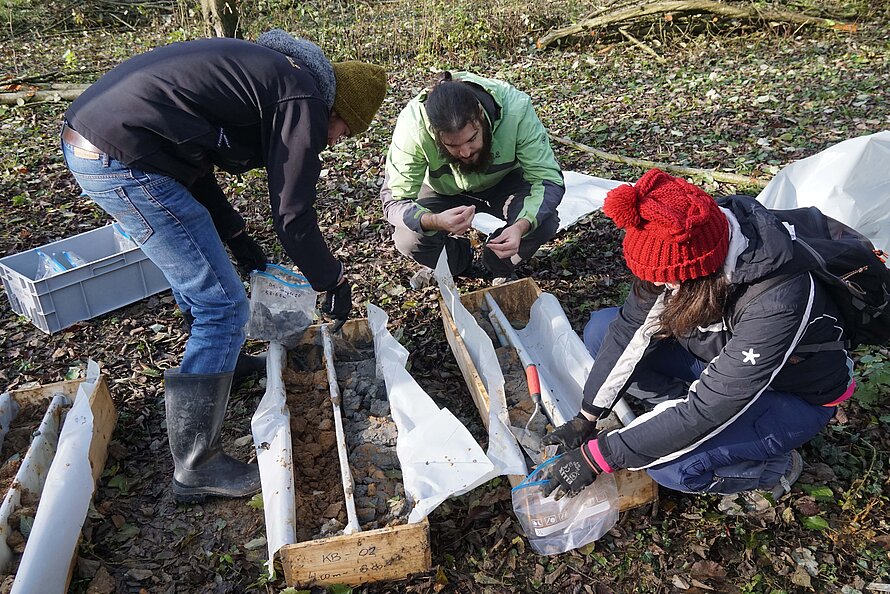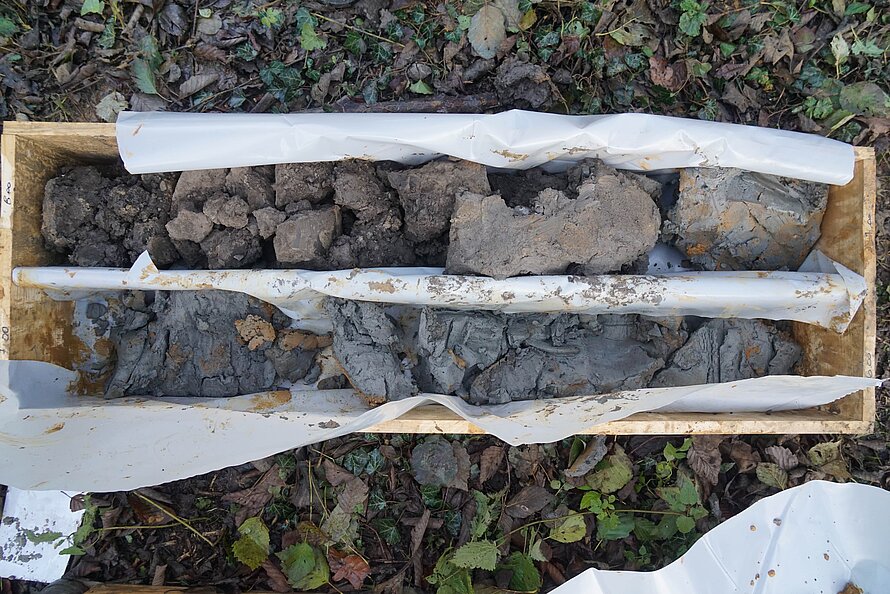On 14th of November, two boreholes with depths of 8 and 6 m respectively, were drilled at the HOAL site next to the stream in the alder forest area. Previous geophysical investigations in this area have revealed a significant anomaly characterized by high induced polarization signatures, which so far has been interpreted as the accumulation of biominerals such as iron sulfides associated to the occurrence of a biogeochemical hot-spot.
Such hot-spots are spatially constrained areas associated with disproportional high rates of microbial activity and the enhancement of biogeochemical processes, such as the precipitation of minerals as metabolic products. As part of the research activities, we have been working on the development of geophysical methods to delineate the occurrence and geometry of such hot-spots; thus, the two boreholes were planned to compare the geochemical status of the sediments from material recovered within the expected biogeochemical hot-spot, and a control point away of the geophysical anomaly.
Initial analysis of the sediment reveal large contents of organic matter in the materials within the geophysical anomaly, which are not observed in the material recovered in the control drill. Further analysis in the laboratory will be conducted to gain detailed information about physical and geochemical parameters, as required to for the quantitative interpretation of the geophysical data.



